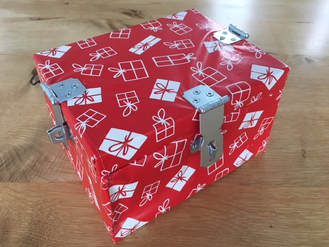
In past years, I’ve given homemade vanilla extract and ten-packs of soup and certificates for babysitting services. More recently, I’ve made personalized cryptic crosswords. (You can get my 2017 Christmas Cryptic here.)
 As kids, we were taught that the best Christmas gifts are made rather than bought, and although my lack of artistic ability should have put pain to that lesson long ago, I’ve never been able to shake it. In past years, I’ve given homemade vanilla extract and ten-packs of soup and certificates for babysitting services. More recently, I’ve made personalized cryptic crosswords. (You can get my 2017 Christmas Cryptic here.) But this year, fascinated by the concept, I decided to try my hand at something considerably more involved: a personalized escape room.
3 Comments
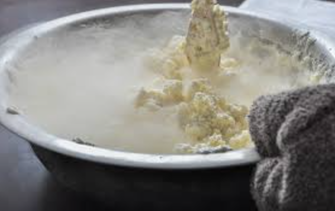 Ice cream made with liquid nitrogen Ice cream made with liquid nitrogen Saturday last, at the Concordia University Exposcience event, my three-year-old figured out how to accelerate and decelerate her heart rate on an ECG by imagining infuriating or calming things. She pulled all the organs out of a model of a human torso, then reassembled them. She controlled a robotic car and accepted a helium balloon and made fractal art but given that she is three, her favourite part was sampling the ice cream made from liquid nitrogen. Of all the demonstrations, my favourite was from the cool cats from the Concordia Chemistry Department. They held a seemingly blank piece of paper over a flame (careful not to burn it) until a hidden message appeared. 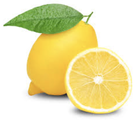 Lemon juice was the invisible ink in that case, and it gave me a geeky thrill to see the trick in action. But it still didn’t beat the subterfuge of another hidden message I saw recently. Vexed by President Trump’s failure to condemn rioting white supremacists in Charlottesville, Virginia, all thirteen members of the U.S. President’s Committee on the Arts & the Humanities (which included actor Kal Penn and Pulitzer prize-winning author Jhumpa Lahiri) resigned en masse in August. Their resignation letter was scathing and formidable. (You can read it here.) But that wasn’t all. Embedded inside the letter was a hidden message: the first letter of each of the paragraphs of the letter spelled the word “RESIST”. Maybe three days later, the Science Envoy for the Department of State, Daniel M. Kammen, also resigned. His letter contained the acrostic “IMPEACH”. Of all the riddles used in cryptics, I find initialism clues and hidden word clues the most delightful because of the way they manage to hide in plain sight, effectively using the words around them as camouflage. But acrostics, which are concealed messages made up of the first letter of every word, sentence or paragraph, can add another mind-blowing dimension. Read the source material and you get one message. But read the acrostic and it can give you a thought-provoking, even jarring new perspective. Examples of acrostics abound, from the Edgar Allan Poe poem (unimaginatively named “An Acrostic) that spells out "ELIZABETH" to the memo from the CEO of Sun Microsystems, which contained the acrostic "BEAT IBM". But the best example I’ve found to date of an acrostic that completely changes your take on things is in Vladimir Nabokov’s 1958 short story “The Vane Sisters”. The story, told in the first person, is about a man who has just learned that a former student with whom he had a brief relationship, Cynthia, has died.  Cynthia, whose sister Sybil commit suicide, was a believer in spiritualism and the occult, and was convinced that the dead send messages to the living, sometimes through acrostics. After the narrator learns of Cynthia’s death, he become frantic, looking everywhere for signs that Cynthia is trying to influence him. He even searches for acrostics. In the end, he finds nothing and is relieved. Readers are too. Until we realize that the last paragraph contains an acrostic: a message from Sybil herself, telling us that she has been reaching out from beyond the grave to manipulate the narrator’s view of the world from the story’s very beginning. Yes, okay. It's a bit heavy. Perhaps I ought to end with a happier tale of the use of an acrostic. A love story. The Moth is a live storytelling event in which people share their true tales on stage in front of an audience. It’s available as a podcast and I listen to it from time to time, especially on road trips. One of the most memorable I’ve ever heard is Cynthia Riggs’ story “The Case of the Curious Codes”. In it, Cynthia describes how when she was 81, she received a mysterious package: an envelop full of cryptograms and a return address given in latitude and longitude. The sight of the cryptograms jogged Cynthia’s memory: at age 18, while working in a marine biology lab, she and a kindly colleague, Howard, used to swap them. He had kept them for 62 years. 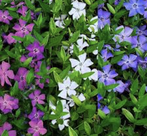 Correspondence ensued. The two caught up after so many decades, discovering all kinds of bizarre coincidences, and growing closer with every package. Eventually Cynthia, an avid gardener, received a package from Howard that contained seven seed packets arranged in the following order: hollyhocks, leeks, orka, vinca, eggplant, spinach, and catnip. H-LOVES-C. So having said all that, I suppose there's only one question left, dear reader. Have you figured out my acrostic?
The first time I saw this sign, which is painted on the side of a building by my old home, I did a double-take. The juxtaposition was so strange. What did it mean?  Was it a message of despair? A comment on the futility of a creative life? Was a hopeless artist asking, through graffiti, “what’s the point of all this, anyway?” Or was it whispered supplication? Was it a reminder to spend our too-few days thoughtfully? Was it a two-word echo of Henry David Thoreau’s reasoning for going to the woods: “to live deep and suck out all the marrow of life”? All of this passed through my mind in a split-second. Then, I realized I was looking incorrectly. 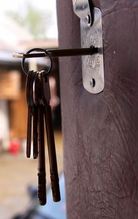 It's rare but every now and again the Globe and Mail messes up the Saturday cryptic crossword puzzle and mismatches the clues and the grid. We love Fraser Simpson's Saturday morning cryptic over here, as I've said previously, so it's a bummer when we're forced to miss out. This morning was one of those mornings: the grid started with 1 Across but the clues started with 7 Across. We mourned the lack of puzzle, then moved on to other things. Until my husband said: "I wonder if we could figure it out for ourselves." 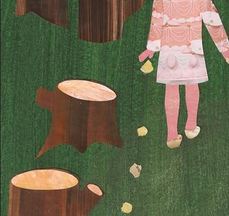 When I write, I am alone. I'm physically alone in a quiet room but I'm also alone in my thoughts. Sometimes I become so absorbed in the text that I literally do not hear anything, including the sound of my husband's voice if he walks in and asks me a question. It's a solitary exercise, writing, from the first sentence I type out on the screen to the moment I hit "send" on the email to my editor. So I'm always a little amazed when an acquaintance calls up to say she stumbled across a piece of mine in a magazine and enjoyed it. It seems magical somehow that a piece I wrote in such solitude has made its way out into the busy, bustling world and has a life of its own, interacting with people that I have never met and probably never will. |
About Sarah
I'm a writer, adventurer, amateur setter of cryptic crosswords, lover of "ah-ha!" moments, and exhausted mom. Archives
November 2021
Categories
All
|